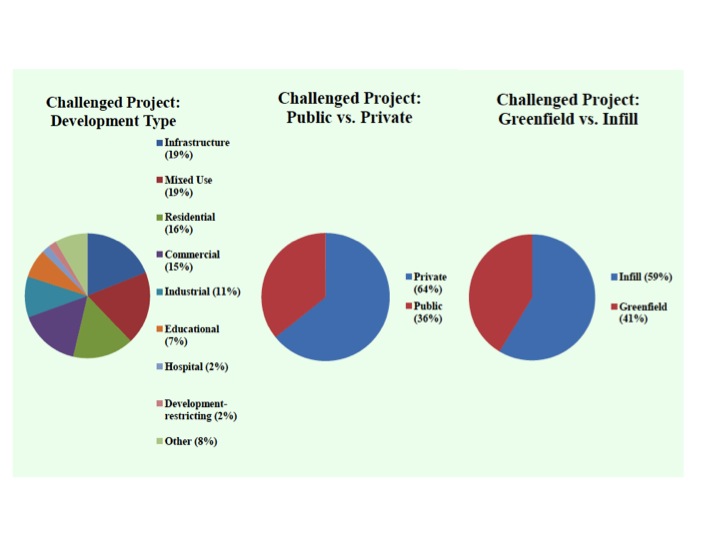Almost 60% of lawsuits filed under the California Environmental Quality Act challenge environmental review projects in infill locations as opposed to greenfield locations, according to a new analysis of 95 recent cases by two lawyers at Holland & Knight.
The new analysis comes on the heels of three other recent studies concluding that CEQA actions are struck down by courts between 40-60% of the time, compared to virtually zero for NEPA.
Mixed-use projects and infrastructure projects were challenged more frequently than any other type of project. Most of the EIRs were challenged on the basis of water supply, traffic, or air quality.
The study by veteran CEQA hands Jennifer Hernandez and Daniel Golub also concluded that about 70% of the plaintiffs in these cases were local organizations, most frequently environmental or homeowner groups. About two-thirds of the projects were private development projects, while a third were public projects.
The Holland & Knight study is the fourth study by private CEQA practitioners on trends on CEQA litigation – a topic that has been the subject of lots of political spin over the years but very little empirical research
In 2011, veteran CEQA lawyer Clem Shute found that over a 40-year period, courts had found CEQA EIRs inadequate more than 40% of the time, compared to 0% -- yes, zero – for NEPA compliance by federal agencies.
More recently, the Thomas Law Group – the firm of veteran CEQA lawyer Tina Thomas – found that EIRs were successfully challenged about half the time, while Negative Declarations were successfully challenged 60% of the time. A recent study by Holland & Knight using the same database found that 52% of Categorical Exemptions were struck down in court as well.
The latest Holland & Knight report was an analysis not of outcomes but of who sues and over what. It was based on 95 court challenges to environmental impact reports between 1997 and 2012.


